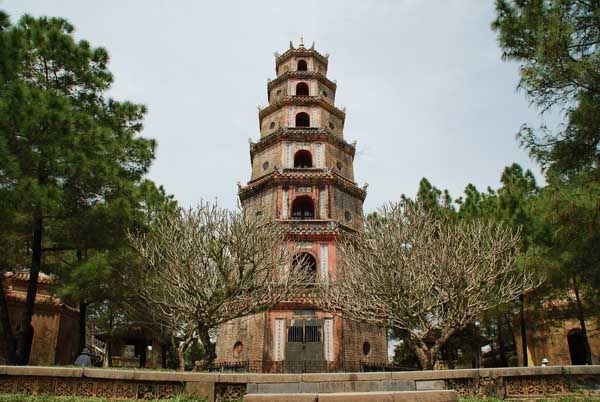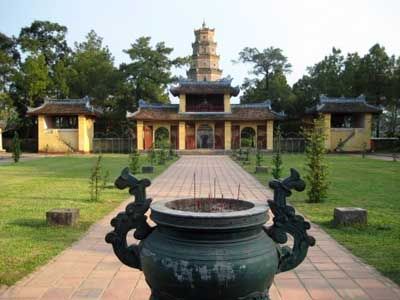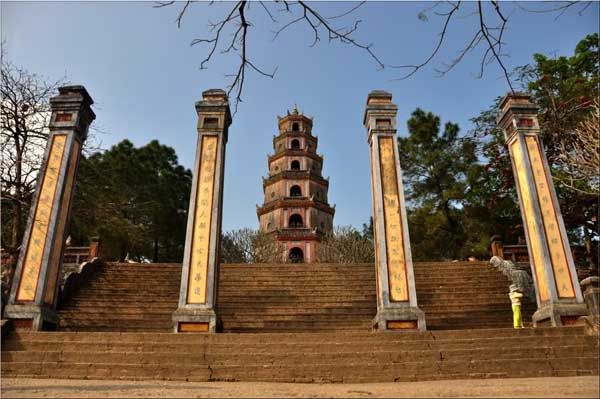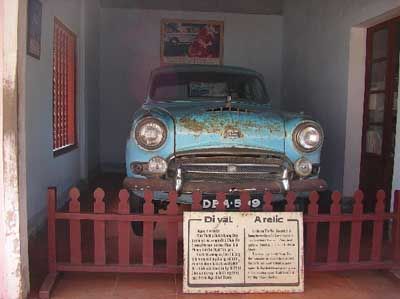Holiday Resolution
Thiên Mụ Pagoda (Vietnamese: Chùa Thiên Mụ; chữ Hán: 天姥寺; also called Linh Mụ, 靈姥) is a historic temple in the city of Huế in Vietnam.
Its pagoda has seven storeys and is the tallest in Vietnam. The temple is often the subject of folk rhymes and ca dao about Huế, such is its iconic status and association with the city. It is regarded as the unofficial symbol of the former imperial capital.
The pagoda sits on the Hà Khê hill, in the ward of Hương Long in Huế. It is around 3 km from the Citadel of Huế constructed by the Nguyễn Dynasty and sits on the northern bank of the Perfume River.
Built in 1601 on the order of the first Nguyen lords, Nguyễn Hoàng, who at that time was the governor of Thuận Hóa (now known as Huế). The Nguyen Lords were in name, officials of the ruling Lê Dynasty in Hanoi, but was the de facto independent ruler of central Vietnam. According to the royal annals, Hoang while touring the vicinity, was told of the local legend in which an old lady, known as Thiên Mụ (literally "celestial lady"), dressed in red and blue sat at the site, rubbing her cheeks. She foretold that a lord would come and erect a pagoda on the hill to pray for the country's prosperity. She then vanished after making her prophecy. Upon hearing this, Hoang ordered the construction of a temple at the site, thus the beginning of Thiên Mụ Tự.
The original temple was simply constructed, then later expanded and refurbished. In 1665, major construction was undertaken by the Nguyễn Lord Nguyễn Phúc Tần.
Source: Wikipedia




No comments:
Post a Comment